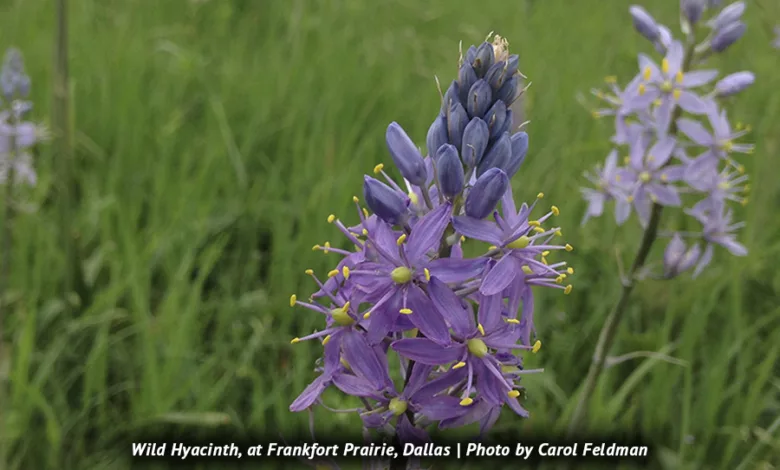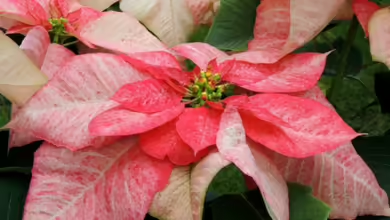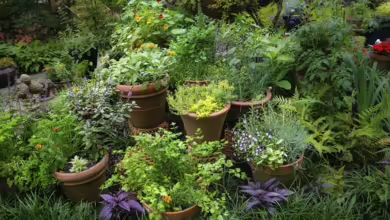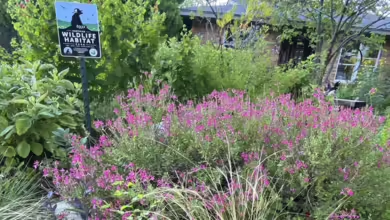Make Your Landscape Water-wise!

Many of us grew up with lush green lawns, considered the pinnacle of American residential landscaping for decades now. When it comes to responsible water use and conservation, these types of lawns are not the best choice.
There is a better way.
A water-wise lawn featuring plants native to North Texas is an excellent alternative to conserve resources, attract and protect pollinators, and make a beautiful, bold statement.
It’s a common misconception that native plants and water-wise landscapes include just cacti, rocks, and gravel. You aren’t limited to those choices in Texas: Our state is one of the most biologically diverse in the country and home to more than 5,000 species of native plants. Texas has several different types of habitats including forests, deserts, grasslands, mountains, wetland marshes, prairies, and coastal plains. Depending on where you live, there are hundreds of options to create a gorgeous, lush landscape.
Native plants are:
- Drought-tolerant.
- Well-adapted to our Texas weather fluctuations.
- A home for helpful insects and other pollinators (such as birds, bees, and butterflies).
- Good at preventing water runoff from heavy rains.
- Beautiful and colorful.
- Cost-efficient.
Planning Your Native Plant Landscape
Before you start planting, come up with a concept plan.
Think about what you want to create in your yard. Try mapping out or sketching a design of what that would look. Water-wise yards look different for everyone — this is your opportunity to get creative and make something that sets your yard apart from all the others.
When deciding what plants to include in your landscape, note which areas of your yard are mostly in the sun and which are mostly in the shade throughout the day. Research plants that thrive in either full sun, partial shade, or full shade in your region and design accordingly.
A tried and true design technique is the rule of thirds:
- 1/3 hardscape: Your driveway, patio, pool, gravel, pebbles, slab rocks, or pavement.
- /3 native plants and/or beds: Turf-free areas with trees, shrubs, blooming flowers, groundcovers, and vines.
- 1/3 lawn.
Plant Selection
Not sure what to plant?
To encourage and welcome pollinators into your garden, include plants with blooming flowers. Perennials are ideal.
Once established in your yard (it can take up to three years for plants’ roots to become established), you won’t have to water native plants very frequently. They require very little supplemental watering to stay healthy and alive.
Choose the right plant for the right place: A plant native to Texas’s coast and sandy soil will struggle in the clay soil of North Texas. Native plants can survive extreme climate fluctuations if they get the right amount of light and are in the proper type of soil.
Hydrozones
Also consider the spacing of certain plants. Group plants with similar watering needs next to each other, rather than, say, putting a very thirsty plant in the middle of two yuccas.
Set your irrigation zone for plants, not any lawn or turf grass you might have. In North Texas, our clay soils hold a lot of water — making it easy to overwater plants. When designing your landscape, space plants with their mature size in mind. You’ll have to be patient, as it can take years for plants to reach their full sizes.
Soils
Once you’ve decided on a design, a healthy landscape requires a healthy foundation: Its soil. Before putting anything in the ground, the first thing you must do is analyze your soil and improve it. A free soil test is available HERE. A lot of Texas properties have had the native soil replaced with dirt, and it usually needs to be enhanced to be a good growing medium.
Texas goes through frequent cycles of drought. The more efficient we are with our watering, the better. Native plants are more water-efficient than lawns or non-native species because they have deep root systems that find and reach water. During rainy seasons, they are excellent for preventing runoff and soil erosion by keeping the water on your property.
Half of landscape water waste comes from over-watering lawns. When you adopt a landscape featuring native plants, you’ll conserve one of our most precious resources in Texas: Potable water.
And you’ll have a beautiful, diverse landscape that supports the natural environment. Explore more at the NTMWD Pledge to Plant Smart page. NTMWD has developed a series of educational presentations on YouTube under the NTMWD Lunch and Learn Series playlist. Check their schedule of upcoming classes HERE.





